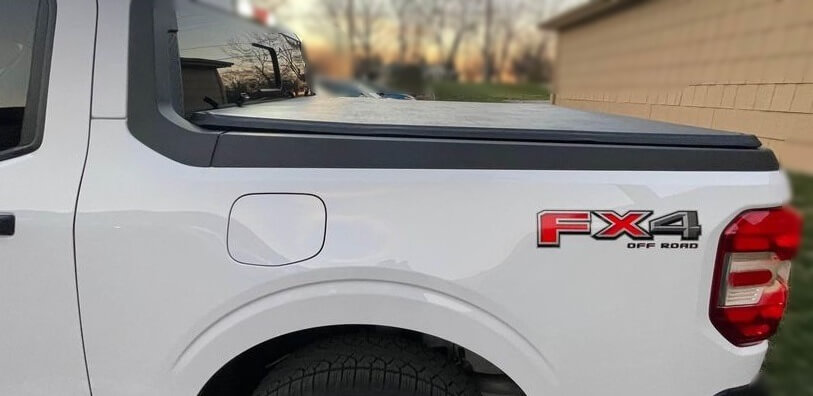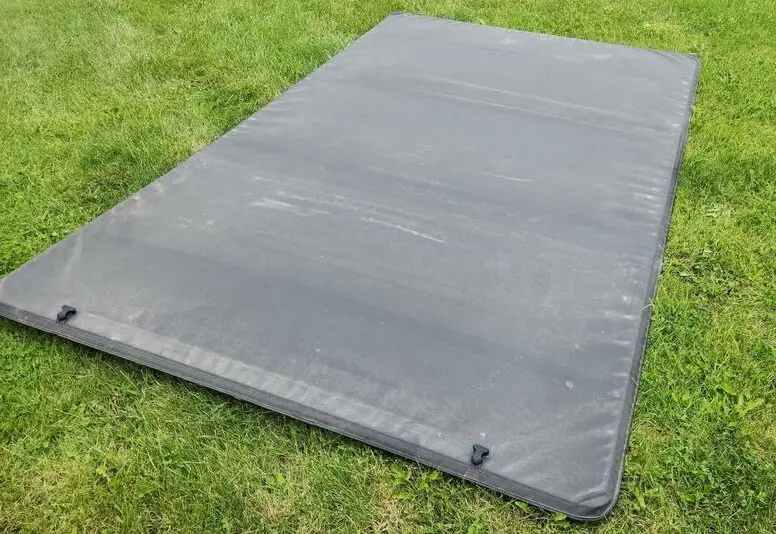Gator SFX Tri Fold Tonneau Cover Installation

Gator’s SFX Tri-Fold Tonneau Cover is popular among truck owners seeking to protect their cargo from weather elements and enhance their vehicle’s aesthetic and aerodynamic features.
Providing secure coverage with its sleek design, this tonneau cover can be installed with a straightforward approach, even for those with limited automotive experience. Let’s delve into a step-by-step guide to assist you through the Gator SFX Tri-Fold Tonneau Cover installation process.
Unpack and Inspect the Components
Before diving into the installation, it’s essential to unpack your Gator SFX Tri-Fold Tonneau Cover and inspect all the components to ensure they are in good condition and accounted for. Refer to the product manual to confirm all parts and tools are available, which typically include:
- The Tonneau cover
- Clamps
- Safety straps
- Weather seals
- Installation manual

Positioning the Tonneau Cover
- Place the folded tonneau cover on the truck bed, ensuring it is aligned with the bulkhead.
- Ensure the cover’s latches face the inside of the truck bed.
- Unfold the cover towards the tailgate to ensure it fits correctly, paying attention to its alignment with the truck bed’s side rails.
- Once you confirm the proper fitting, fold the cover back towards the cab.
Attaching the Clamps
- Identify the clamping areas, typically near the cab side of the truck bed.
- Locate the first pair of clamps with the cover folded back towards the cab. Ensure they are correctly oriented as per the manual’s instructions.
- Slide the clamps into place, ensuring they are aligned with the side rails, and hand-tighten them provisionally.
- Repeat the above steps for any remaining clamps along the bed rail, ensuring they are evenly distributed and secured.
Final Adjustments
- Slowly unfold the tonneau cover towards the tailgate, ensuring it is smoothly rolling out and aligning with the side rails.
- Once fully unfolded, gently press down on the cover to engage the rear latching mechanism, securing it to the tailgate area.
- Check the side rails and the cover to ensure they are perfectly aligned, and make any necessary adjustments by relocating the clamps as needed.
- Ensure the cover is taut and smooth, without any visible sagging or wrinkling.

Securing & Testing
- After all adjustments have been made, tightly secure all clamps to fasten the tonneau cover, ensuring stability and rigidity.
- Perform a “pull test” by gently tugging on the cover to make sure it is firmly secured in place.
- Open and close the tailgate, checking for any interference or misalignment with the tonneau cover.
- Fold and unfold the tonneau cover several times, ensuring it operates smoothly and latches securely during each operation.
Weather Seal Adjustment
- If your vehicle’s bed rail has a liner, you might need to apply additional weather stripping (if provided) to prevent water ingress.
- Clean the area where the weather seal will be applied.
- Firmly apply the weather seal along the bed rail’s length, ensuring it is in a straight line and without any air bubbles.
- Conduct a thorough check to ensure the seal is firm and secure.
Final Review
- Recheck all clamps, making sure they are tightly fastened and secure.
- Inspect the installation to ensure all components are aligned and operating as intended.
- Ensure the cover opens, closes, and folds smoothly and securely.
- Confirm that the cover provides a snug and secure fit over the truck bed.
Closing Thoughts
Installing a Gator SFX Tri-Fold Tonneau Cover is generally a simple process that most truck owners can manage without professional assistance.
Ensuring that each step is executed accurately and paying attention to detail will provide a secure, efficient, and aesthetically pleasing addition to your vehicle, offering reliable protection for your cargo against the elements and potential theft.
Note: Always refer to the specific installation manual provided with your Gator SFX Tri-Fold Tonneau Cover for any instructions or recommendations from the manufacturer. This guide is generalized and intended to provide a foundational understanding of the installation process.
- Gator ETX vs SFX
- Gator SFX vs Pro
- Gator SFX Tonneau Cover Review
- Bakflip G2 Tonneau Cover Installation

Peter Rees, your go-to car parts expert, bridges the gap between mechanics and motorists. With over decades in the automotive industry, he decodes the intricacies of vehicles in his insightful blog, steering readers toward savvy decisions and smooth rides.
